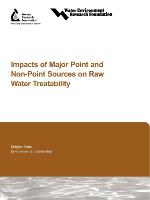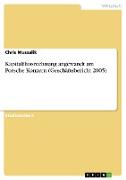- Start
- Impacts of Major Point and Non-Point Sources on Raw Water Treatability
Impacts of Major Point and Non-Point Sources on Raw Water Treatability
Angebote / Angebote:
Utilities can help protect source quality and reduce treatment costs at minimal expense by forming partnerships with watershed stakeholders. Utility participation in protection efforts, even at zero or low BMP cost-share levels, helps leverage funds and prioritizes the watershed as a drinking water catchment.
Due to the high cost of treatment plant capital improvements relative to watershed BMPs, utilities should consider long-term investment in source protection measures in order to reduce the need for major process changes. Utilities should also consider non-economic benefits of source protection, including the public health benefit of reduced exposure to pesticides, pathogens, and emerging contaminants.
This guidance manual includes the following:
. A literature review describing the extent and impact of agricultural non-point source pollution, and the pollutant removal mechanisms and performance of common agricultural BMPs
. An overview of watershed modeling that describes watershed models, their limitations, and the resources needed to use them
. An overview of water treatment plant simulation modeling that describes underlying model assumptions
. Results of watershed model runs showing the relative contributions of different point and non-point sources and the effects of BMP implementation on pollutant loads
. Results of WTP model runs that show the impact of changes in pollutant loads on the operations, costs, and effluent quality of four WTP types
RESEARCH PARTNER
WERF
Folgt in ca. 15 Arbeitstagen




